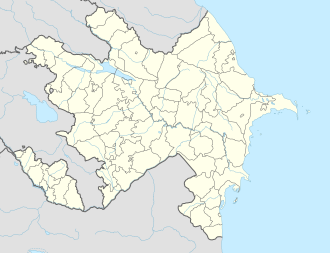History
With the decision of the National Council of the Supreme Soviet of the Republic of Azerbaijan dated 29 April 1992 and numbered 112, Lenin district of Baku city was named Sabunçu district. [1] In addition, Bakıhanov settlement, which is the center of Sabunçu district, received settlement status in 1936, Razin settlement was given its name, and in 1992 it was named Bakıhanov settlement.
This page is based on this
Wikipedia article Text is available under the
CC BY-SA 4.0 license; additional terms may apply.
Images, videos and audio are available under their respective licenses.






